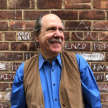Review of 'Making a Murderer' 2
The Very Pits of Justice

My wife and I binge-watched the second season of Making a Murderer on Netflix the past few evenings. In an America brought to new levels of injustice and anger and despair courtesy of Trump, and commitment to vote him and his Republicans out of office as soon as possible, the story of what happened to Steven Avery and Brendan Dassey provides yet another totally separate example of the decline and miscarriage of justice in America, in this case due to police, prosecutors, and judges, including the U. S. Supreme Court.
The facts are these:
Brendan Dassey confessed, when he was 16-years old, to murdering Teresa Halbach. There is no forensic evidence whatsoever to implicate him in the crime. Yet he was convicted and sentenced to life in prison. The video in which he gave his confession couldn't be more clear: he is not very bright, and he's fed imagined details of the crime by his questioners. They told him what they needed to hear, over and over again, until he was able to mouth the words of his confession. All of that is laid out, in detail sickening for justice, in Season 1.
Laura Nirider and Steven Drizin take up his defense in Season 2. They get no justice for their client in Wisconsin courts. Their only option is to appeal in Federal courts. This has become very difficult, given AEDPA (Anti-Terrorism and Effective Death Penalty Act), passed overwhelmingly by Congress and signed into law by, yes, Bill Clinton in 1996. This law instructs Federal judges to be extraordinarily careful in overturning convictions for murder in state courts. Nonetheless, a Federal district court judge did just that for Dassey. Wisconsin could have released him, but they chose to appeal. A three-judge Appellate panel (7th Circuit) upheld the district judge. Wisconsin appealed again, this time to the full 7th Circuit, which decided 4 to 3 that nothing untoward happened in Dassey's interrogation or subsequent conviction. Nirider and Drizen took the case to the U.S Supreme. Four justices were needed to get the High Court to consider the case. That requisite number could be not attained, and the Supreme Court declined to hear the case, this past June.
The villains in this outrage: Wisconsin Attorney General Brad Schimel, the at least six Justices on the U. S. Supreme Court who were uninterested in hearing Dassey's case, and Bill Clinton, who should have at least have had the integrity to veto AEDPA (even though Congress would've overridden his veto).
The result: a young man, now in his late 20s, is on his way to spending most of his life in prison, based on a confession that one of the judges in the 7th circuit said makes her "skin crawl" due to how unfair it was.
I suppose, if Steven Avery's conviction is overturned, that Brendan Dassey may have another chance. Avery served 18 years in prison for a rape he didn't commit—DNA evidence cleared him—before he was arrested and convicted for Halbach's rape and murder. He never confessed. He was convicted on forensic evidence that his new lawyer, Kathleen Zellner, has systemically shown was concocted and planted. Scientific experts say the following: Blood in the car in which Halbach's body was allegedly thrown has a splatter pattern totally inconsistent with that. Same for blood that allegedly came from Avery. A bullet fragment that allegedly passed through Halbach's skull and brain shows no traces of phosphorous which would be there if the bullet went through bone. The burn pit on the Avery property in which her body was allegedly all but cremated could not have generated the heat necessary for that sort of total consumption in the flames. Etc, etc.
Zellner has also suggested a variety of alternative suspects, including Brendan's brother Bobby and his step-father Scott. When the final episode of the second season ends, she has achieved at least the positive result of an Appeals Court in Wisconsin ordering the lower court to have a new evidentiary hearing on the case.
The effect on the Avery family, as well as the Halbach family, has been devastating. Steven's parents are in their 80s, and everyone worries, with due cause, that they may pass away before their son is released. Zellner's pointing at Brendan's brother and stepfather as the possible murderers has, of course, set Brendan's mother against Zellner, and her brother Steven Avery, too.
But such is the state of justice in America in 2018. It doesn't and shouldn't matter if I or anyone is 100% sure that Steven and Brendan didn't do this heinous crime. I am 100% sure that there's more than enough reasonable doubt, in dozens of places. Why more judges and Justices haven't seen that is cause for concern not only about out justice system, but about the human condition itself.
About the Creator
Paul Levinson
Novels The Silk Code & The Plot To Save Socrates; LPs Twice Upon A Rhyme & Welcome Up; nonfiction The Soft Edge & Digital McLuhan, translated into 15 languages. Best-known short story: The Chronology Protection Case; Prof, Fordham Univ.






Comments
There are no comments for this story
Be the first to respond and start the conversation.